Métiers d’art are the delectable darlings amidst elaborate horological mechanisms, but don’t let that fool you. The tradition of decorative crafts is an important part of a watchmaker’s legacy, the savoir faire that elevates watchmaking to its pinnacle (by beautifying it, of course). Like true works of art, métiers d’art timepieces demand extensive effort and arcane know-how — we’re talking handcrafting spectacles to launch the proverbial fleet of a thousand here — making them essentially anti-industrial and therefore the ultimate luxury.
Blancpain fosters its precious métiers d’art through an award-winning in-house studio on a refurbished farmhouse in Le Brassus. Surrounded by the idyll of the Vallée de Joux, master artisans toil to preserve and perpetuate an array of artistic disciplines passed down through generations, from classical techniques like enamelling and engraving to esoteric ones like shakudo and binchotan. For the craftsmen, these métiers are their way of life, a calling that manifests in a soupçon of artisanal models among the annual Villeret novelties.
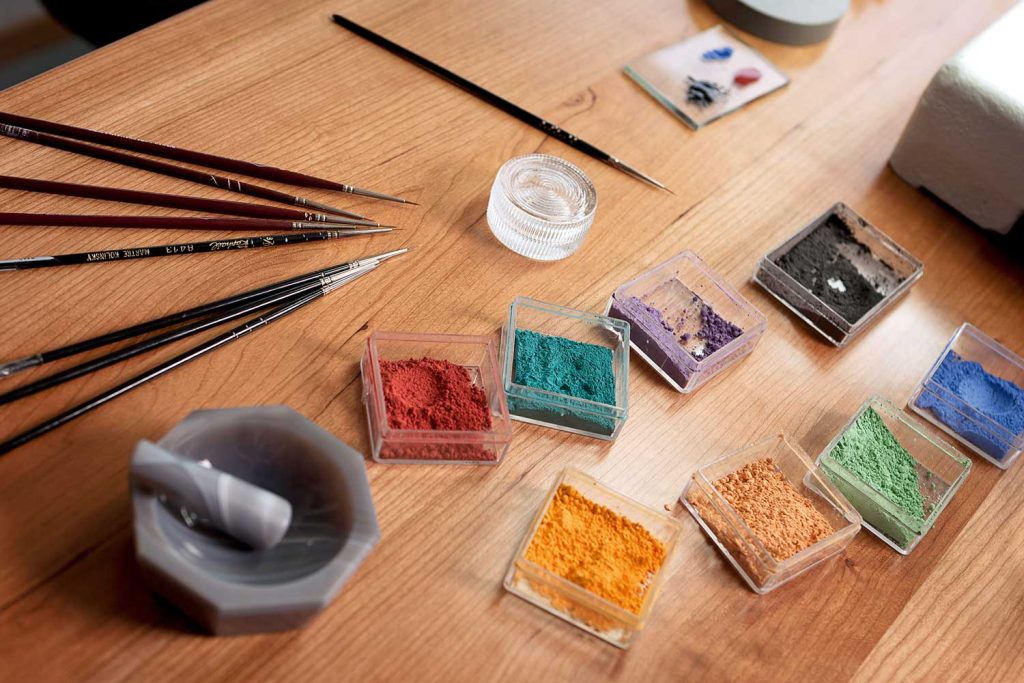
Blancpain’s enamellers create their colours by mixing fine enamel powder with metallic oxides and pine oil, before painting with microscopically fine brushes.
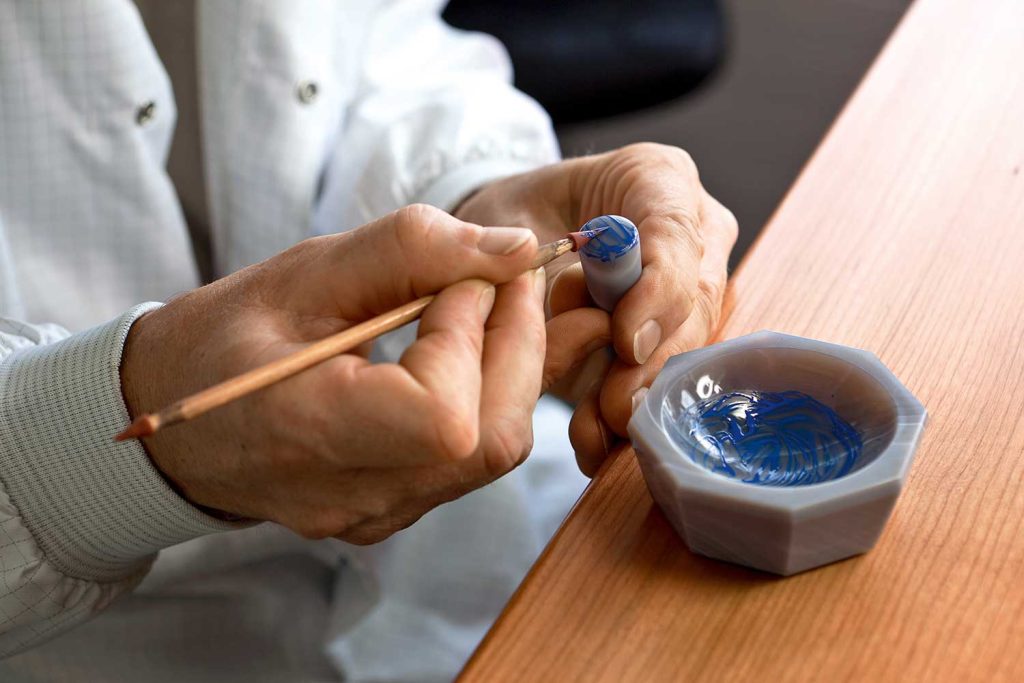
Blancpain’s enamellers create their colours by mixing fine enamel powder with metallic oxides and pine oil, before painting with microscopically fine brushes.
The métiers d’art timepieces of Blancpain depict a mythical menagerie culled from worldwide culture and folklore, fantastical mise-en-scènes that spotlight, among others, a living fossil, a picturesque wave, and even a pachydermal deity. The lattermost is in reverence to the Hindu god Ganesh, and debuts the prominent use of shakudo in watchmaking. Historically prized by samurai as a form of sword embellishment, the Japanese alloy of copper and gold achieves a black patina when treated with a warm chemical bath called rokusho, providing powerful contrast for the golden elephant godhead and damascened details surrounding it. So what did the industry do when they gazed upon this face of divinity? Awarded it the Grand Prix d’Horlogerie de Genève in Artistic Crafts, naturally.
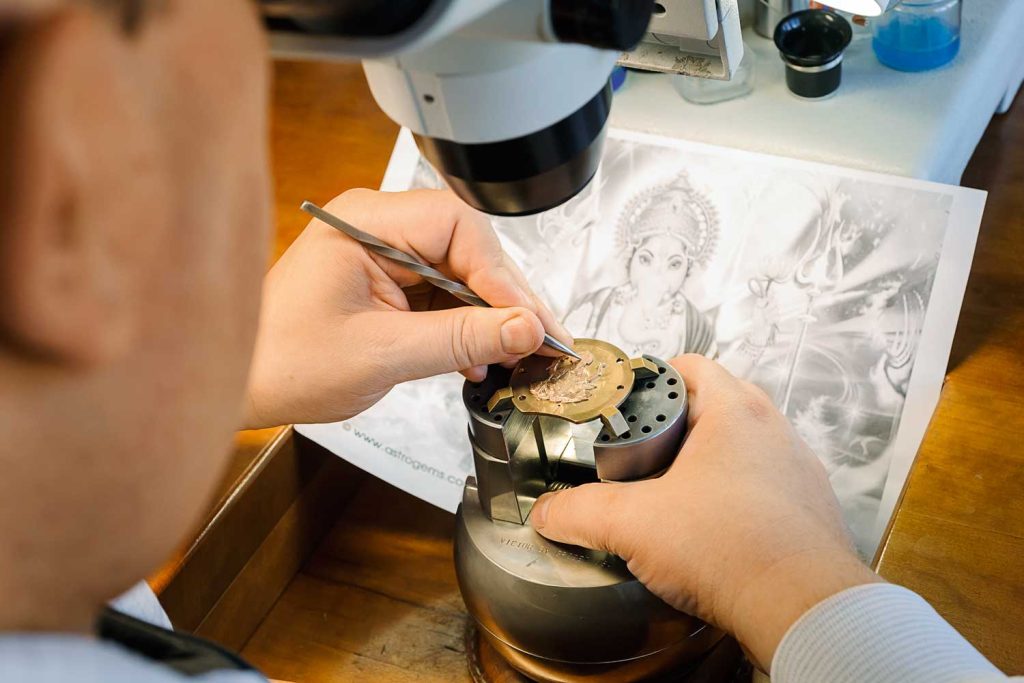
The creation of the award-winning Villeret Shakudo Ganesh begins with drawings of the Hindu god, before engraving the divinity and decorative motifs on the dial.
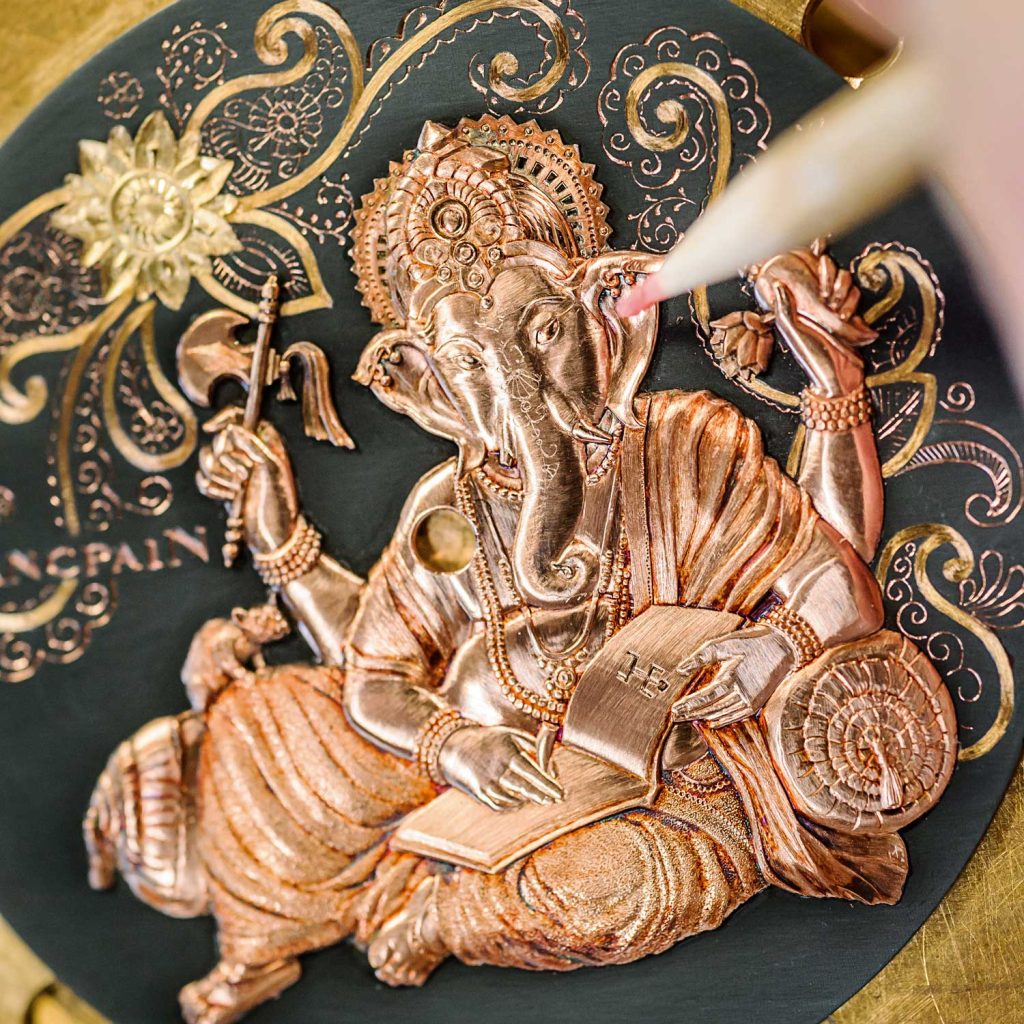
The creation of the award-winning Villeret Shakudo Ganesh begins with drawings of the Hindu god, before engraving the divinity and decorative motifs on the dial.
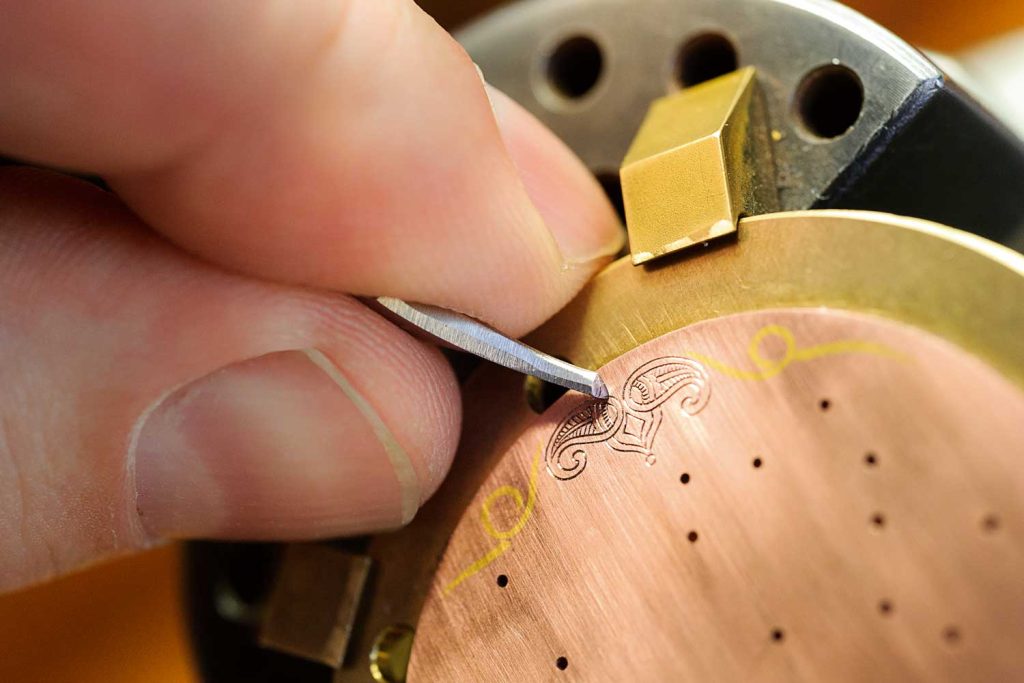
The creation of the award-winning Villeret Shakudo Ganesh begins with drawings of the Hindu god, before engraving the divinity and decorative motifs on the dial.
Blancpain’s fascination with Oriental art forms is due largely in part to the creative prerogative of its métiers d’art studio. Freed from management direction and the horological past, artisans have the opportunity to explore unconventional techniques and materials when rendering their micro-tableaus. For the iconic image of The Great Wave off Kanagawa, the same rokusho treatment is applied to a white gold engraving of the sea swell for a sable shimmer, which plays off the textured surface of Mexican obsidian, a stone never before used for watch dials.
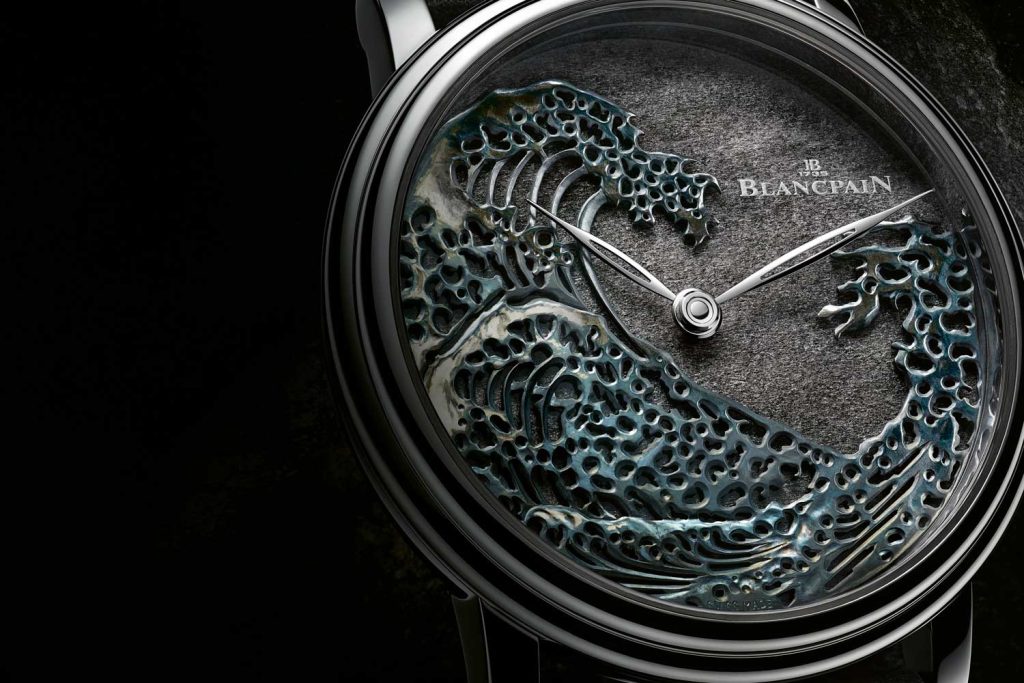
Blancpain ‘The Great Wave’
Another Japanese material inaugurated is binchotan, pure charcoal made from Ubame (holm) oak found in the Kishu region. Its steely hardness is the result of a centuries-old combustion process, after which the charred wood is sliced into thin discs, lacquered and adorned with a hand-engraved Torii gate (which symbolises the transition from the mundane to the sacred — an apt metaphor for métiers d’art in general).
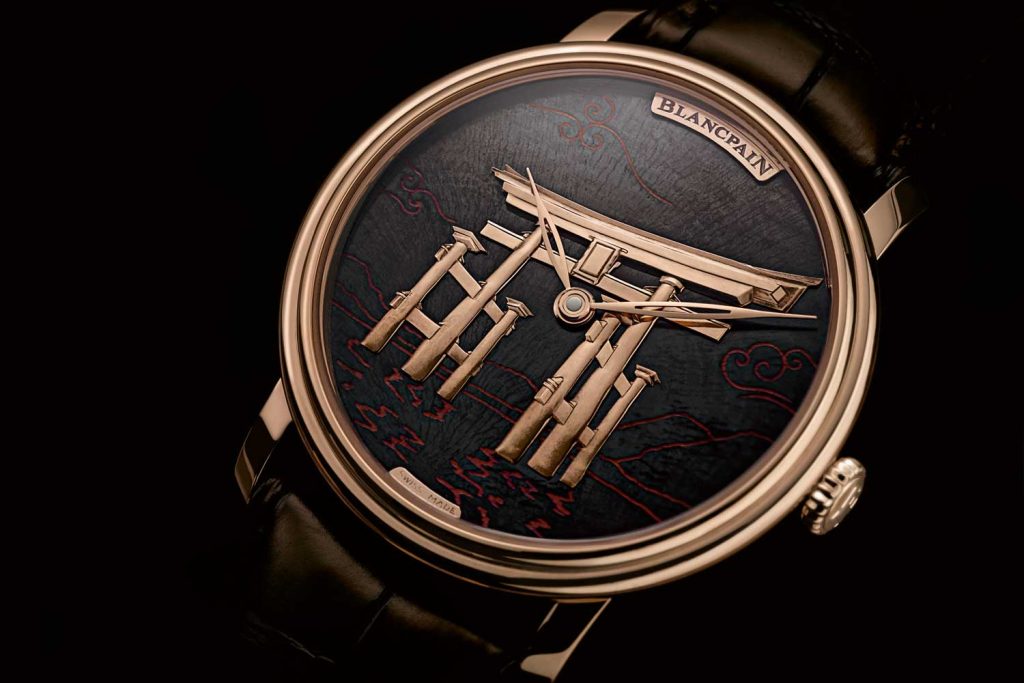
Blancpain Villeret Metiers D’art Binchotan
The brand’s latest artistic creations are dedicated to the Four Great Beauties of ancient China. Regarded as the most aesthetically advantaged of their time, romantic anecdotes of these legendary ladies are expertly retold on the dial via enamelling and a miscellany of supporting crafts: Xi Shi is resplendent even while doing laundry, washing her silks in a translucent stream wrought from champevé; mysterious Diao Chan performs a moon ritual against a shakudo night sky; Wang Zhaojun sensibly leaves a mountainous landscape made of wood marquetry for better comforts; and glamorous Yang Guifei is in morning repose with her favourite martini in hand, fully captured through miniature enamel painting. The confluence of decorative techniques displayed in the ornamental quartet demonstrates Blancpain’s mastery over both traditional watchmaking métiers and those less orthodox.
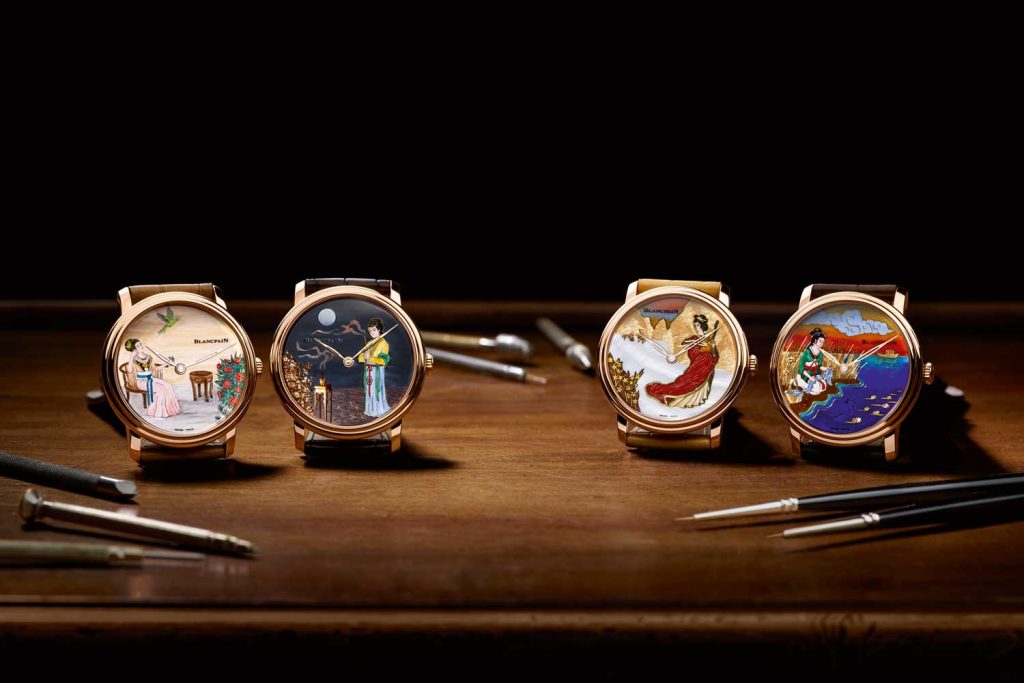
Four Great Beauties of ancient China
It goes without saying that all of Blancpain’s métiers d’art watches are unique pieces (scarcity is part of the appeal, because if everyone is beautiful then nobody is). But whatever legend is being brought to life, they are all legitimate expressions of the brand forged through handcraft.


















